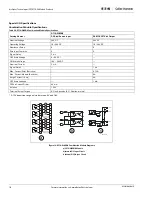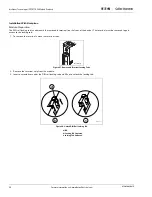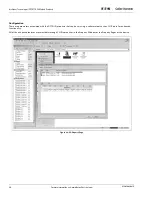
Intelligent Technologies (
IT.
) D77A I/O Module Products
MN05002001E
For more information visit: www.EatonElectrical.com
23
I/O Function
Discrete Input Modules
Figure 17
illustrates the basic signal processing operation. When a signal is present at the input point, the module responds with the
following sequence:
1.
Optical Isolation
— Optical isolation protects the I/O circuits and communication circuits from possible damage due to
transients and over-voltage.
2.
Debounce Logic/Control
— A debounce circuit and software limits the effects of transients and electrical noise by requiring the
input to be true for a certain period of time before the logic acknowledges a true signal. Once a true signal is achieved, the logic
turns on the LED.
3.
QCPort Com./Logic
— The logic updates the QCPort communication on a regular, scheduled basis as to the status of the input
point.
Figure 17: Discrete Input Module Operation
Discrete Output Modules
Figure 18
illustrates the basic logic processing operation. When the processor activates an output point, the module responds with
the following sequence:
1.
QCPort Com./Logic
— QCPort communication updates the logic circuit on a regular, scheduled basis as to the status of the
output points.
2.
Optical Isolation
— Optical isolation protects the I/O circuits and communication circuits from possible damage due to
transients and over-voltage. Once an active signal is transmitted to the optical isolation circuit, the LED is forward-biased.
3.
Output Drivers
— The driver activates the output point.
Figure 18: Discrete Output Module Operation
D77A-004
Optical
Isolation
Inp ut
Debounce
Logic/Control
QCPort
Com.
LED
Indication
D77A-005
QCPort
Com.
Optical
Isolation
Output
Dri vers
LED
Indication
Output
Содержание D77A
Страница 2: ......















































